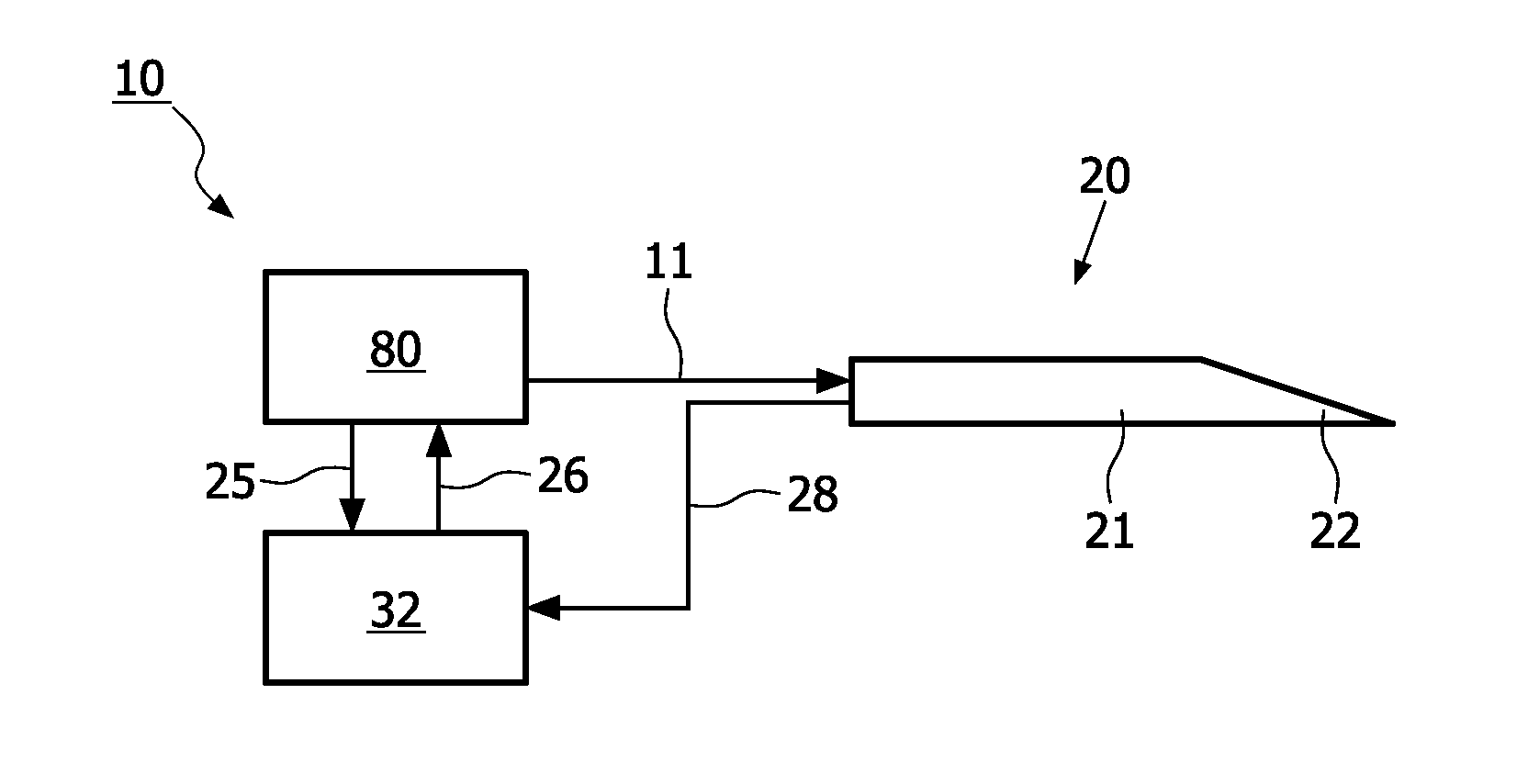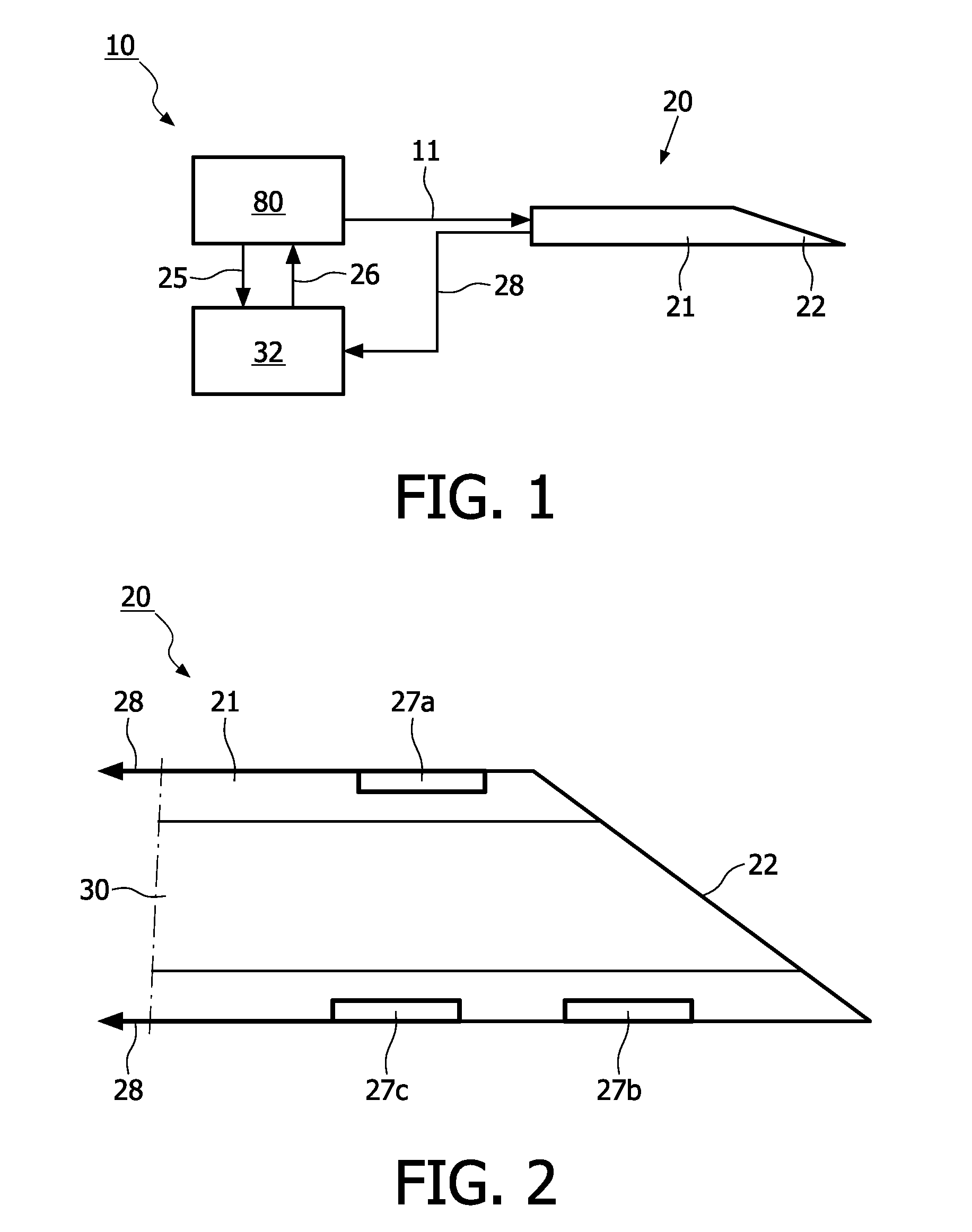Optical examination device adapted to be at least partially inserted into a turbid medium
a technology of optical examination and turbid medium, which is applied in the direction of optical radiation measurement, diagnostics using spectroscopy, instruments, etc., can solve the problems of only small numerical apertures and the inability to disseminate sophisticated and expensive spectrometers, and achieve the effect of reducing data acquisition time and cos
- Summary
- Abstract
- Description
- Claims
- Application Information
AI Technical Summary
Benefits of technology
Problems solved by technology
Method used
Image
Examples
Embodiment Construction
[0028]An embodiment of the present invention will now be described with reference to FIGS. 1 to 4. The optical examination device 10 comprises a part 20 adapted to be inserted into a turbid medium. The optical examination device 10 which will be described with reference to the figures as an exemplary embodiment is formed by medical device and, in this case, the part 20 is adapted to be inserted into a mammal body (i.e. a human or animal body). In this case, the turbid medium is formed by the mammal body. In the exemplary embodiment which will be described with reference to the Figures, the part 20 is formed by a biopsy needle. The part 20 has a shaft portion 21 which comprises a tip portion 22. During insertion into the turbid medium, the tip portion 22 forms the foremost portion of the shaft portion 21. The shaft portion 21 has a tubular shape with a substantially circular cross-section and comprises a beveled shape in the region of the tip portion 22. The shaft portion 21 is provi...
PUM
 Login to View More
Login to View More Abstract
Description
Claims
Application Information
 Login to View More
Login to View More - R&D
- Intellectual Property
- Life Sciences
- Materials
- Tech Scout
- Unparalleled Data Quality
- Higher Quality Content
- 60% Fewer Hallucinations
Browse by: Latest US Patents, China's latest patents, Technical Efficacy Thesaurus, Application Domain, Technology Topic, Popular Technical Reports.
© 2025 PatSnap. All rights reserved.Legal|Privacy policy|Modern Slavery Act Transparency Statement|Sitemap|About US| Contact US: help@patsnap.com



